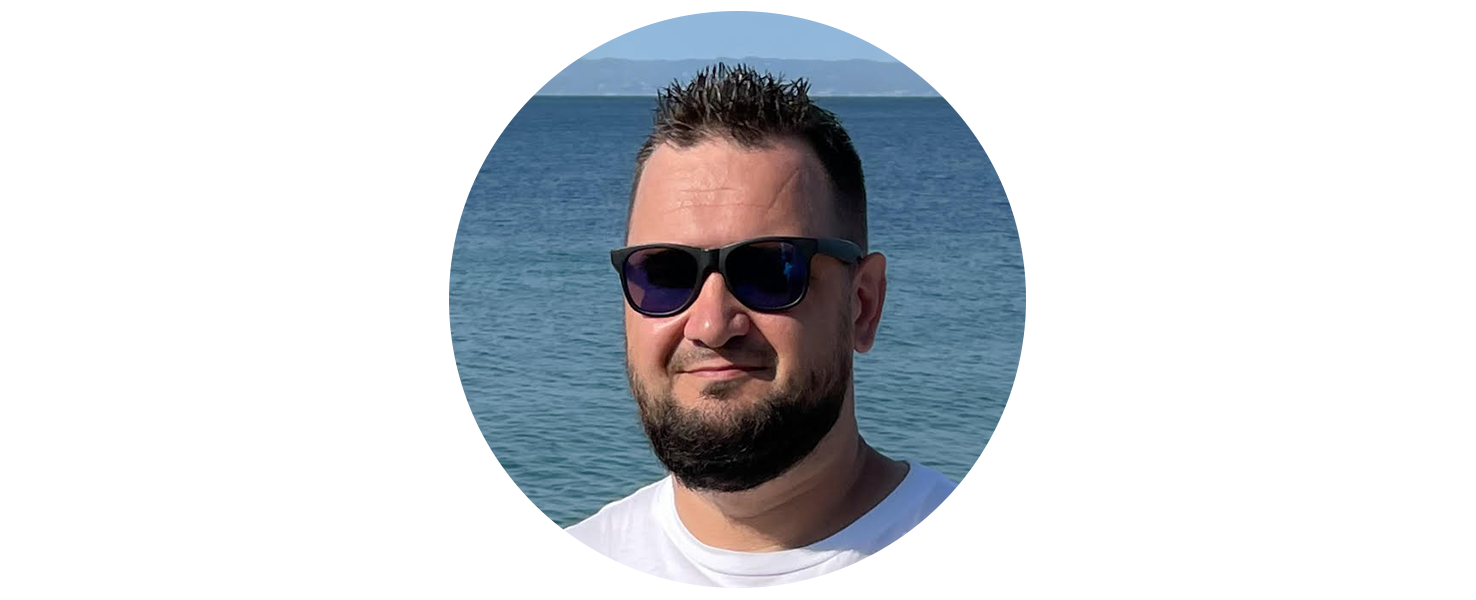
Interview with Apos Caspian Sound Designer Sandu Vitalie
Apos: Let’s start at the beginning. How did you get involved with the project?
Sandu: It all started when Apos reached out to me with a simple question: is it possible to make a headphone in six months? I knew that making one from scratch wasn’t possible, because that takes a year or two or even longer. So I knew that we needed to look at OEM designs, something that could be done in Europe or the US.
The first person I thought of was Valentin from Kennterton, who’s the coolest and most honest and down-to-earth CEO I know. I pictured working with him from the very beginning.
I should mention that Apos asked several reviewers, including me, what we think about a new headphone under their branding, and how we should design it and brand it. I don’t know why they chose me, but they did.
Apos: Well, we love you.
Sandu: I love you, too. [Laughs.]
Apos: What was the motivation behind the Apos Caspian?
Sandu: First of all, if you check all of the latest amplifiers and DAC releases--especially those that are coming from China--you’ll observe that there’s a race for cleanliness and linearity and transparency. So, pretty much the dynamic range is the name of the game. The biggest problem is that if your gear is ultra-linear, then some of the magic from your music will fade away. It’s like you’re no longer listening to music but just sounds and noises. While making the Caspian, I thought about making a fun-sounding headphone. We tuned it to sound fun even out of linear headphone rigs.
Apos: Could you define a “fun-sounding” headphone for our readers who might not know what that means?
Sandu: It means it has a little more mid-range presence and a little more mid-bass. The voices sound full and meaty. Think of something like a Sennheiser HD650. That’s fun to me.
Apos: I love the HD650.
Sandu: It’s very fun. But the Caspian is even better. [Laughs.]
Apos: Tell me about your role on this project. What skills did you bring to the table?
Sandu: My role with the Caspian was that I sent a sketch of what I was envisioning to Valentin. We talked over the phone about how it should look, how it should sound. We went with a dynamic driver--the biggest they have. We also went with a graphene-coated driver that could withstand a slightly higher SPL and a little less distortion at high volumes.
Apos: What was the philosophy behind the sound tuning?
Sandu: All the newest headphone rigs are going for an ultra-clean, ultra-linear reference sound. Nothing is wrong with that, but sometimes I want to listen to something fun, to remember the fun times. That’s how the Caspian came to be. I wanted something fun and engaging. I didn’t roll off the treble--that’s important. There’s lots of treble presence. I wanted a sound that would put a smile on your face. This is basically how Caspian was crafted: with pure passion.
Apos: Is it safe to say that you were the ideas man behind the headphone?
Sandu: I had the headphone in my mind. The build quality, the materials, the idea. And then I talked to Valentin and he approved.
Apos: Had you worked with Valentin before this?
Sandu: I’ve made some reviews for Kennerton. I have four of their headphones. [Laughs.] I have all of their headphones.
Apos: Of course you do. [Laughs.] Your gear collection is impressive.
Sandu: Thank you.
Apos: Did this sound exist in this price range before? Is there another headphone you’d compare it to?
Sandu: Yes and no. No, because many popular headphones like the Sundara and other planar magnetics are going for a reference tuning, and that could be a slight issue with modern headphone rigs. They take away some of the soul from the music. But also yes, because if you look at older headphones like the Sennheiser HD650, they have a sound that’s quite similar to the Apos Caspian, but there’s still a major difference. The HD650 is all-plastic, while the Caspian is all metal, wood, and leather. And the HD650 cannot take high SPL--it starts clipping. The Caspian can take it with no distortion. The Caspian is easy to drive; the HD650 not so much. Also, the Caspian is more fun, more detailed. Realistically speaking, there aren't any other headphones like it at this price point.
Apos: How many prototypes did you listen to?
Sandu: The Caspian is based on the Kennerton Vali, but we’ve changed just about everything about it. Apart from the Vali that I started with, there were two iterations of the Caspian that I measured and listened to over a hundred times, and I told them how it should be improved. And I think the latest iteration is quite unique. I like everything about it.
Apos: How did the headphone change from prototype to prototype?
Sandu: The first prototype looked slightly different. The materials changed. The ear pads changed. Quite a lot of things actually changed. The biggest change, in my opinion, was the sound quality. Looks matter to me, that’s for sure. But sound matters a lot more. The first prototype didn’t have the sound that I wanted, but the last one was spot on.
Apos: What kind of changes and adjustments did you suggest?
Sandu: There were quite a lot of them--too many! [Laughs.] I wanted locking-type mini XLR jacks instead of the 3.5mm and 4-core conductor cables. That’s very important for me, because that’s the sturdiest jack and the best-performing cable. Its internal geometry is 100% balanced. Apart from that, the shape of the cups changed. The shape of the ear pads changed. The size of the ear cup opening increased in size so it could sound more open. The headband changed twice. What changed most by far is the sound tuning. I didn’t want to sacrifice treble presence and detail retrieval. I really didn’t want to implement the soulless and boring Harman Curve, which I don’t like.
Apos: What kind of music were you testing with these headphones?
Sandu: Honestly, I could start my day with Mozart and finish my day with Slayer. Anything in between is great. [Laughs.]
Apos: Was there a certain song you listened to on the final iteration of the headphone that made you say “Wow”?
Sandu: “Come Let Go” by Xavier Rudd on Live in the Netherlands. It’s a live song. It sounds outside my head, past my shoulder level, about two meters away from me. It’s a very open, very layered sound. It worked amazingly well on the Caspian. His voice, the crowd. It was amazing.
Apos: Do you think the Caspian added some soundstage to it?
Sandu: The first iteration had a semi-open sound. I wanted to improve that, to make it bigger sounding. So we increased the size of the ear cup opening. We made it slightly bigger so that more air would go outside. Right now, they are bigger-sounding, that’s for sure. Not huge-sounding like a high-end planar magnetic. But big-sounding compared to other dynamic driver headphones in this price range.
Apos: Let’s zoom out for a second. The Caspian was created by multiple teams working on different continents in the middle of a global pandemic. What was that like?
Sandu: Honestly? Really amazing. It was a lot of fun. It felt like a breath of fresh air. I’m writing and filming all the time, and talking about the Caspian felt like I was able to disconnect from my work for a few days. The teams also got along very well. We worked fast. Apos is amazing at what they do, and Valentin of course is awesome. I was working with geniuses at the top of their game. It was a winning match from the start. I was just happy to be part of the team. I would do it again.
Here’s a funny story. During our first call, Valentin wanted to impress me, so he asked me something in my mother tongue. And I replied in his mother tongue. And you asked, “Did you switch places?!” That was really funny. I still think about that.
Apos: Did you learn anything interesting during the process?
Sandu: Everything was interesting. Everything was old but also new to me. Every step felt like a small victory and a lesson learned. There wasn’t a step that didn’t teach me something. Every step was a lesson.
Apos: Were there any “wow” moments during the process?
Sandu: Seeing the final version of the Caspian. Holding it, doing measurements, listening to it, and finally giving it the green light. I knew that every small design decision would affect the sound quality (this is basically physics and acoustics combined with a little bit of madness). [Laughs.] Every small design element that you change has a large effect on the sound quality. So you have to take small steps to reach a final product.
Apos: Thanks so much for meeting with us, Sandu. Do you have any final remarks before we wrap up?
Sandu: I just want to thank Valentin and Apos for making this possible. It was amazing working with both of you.


